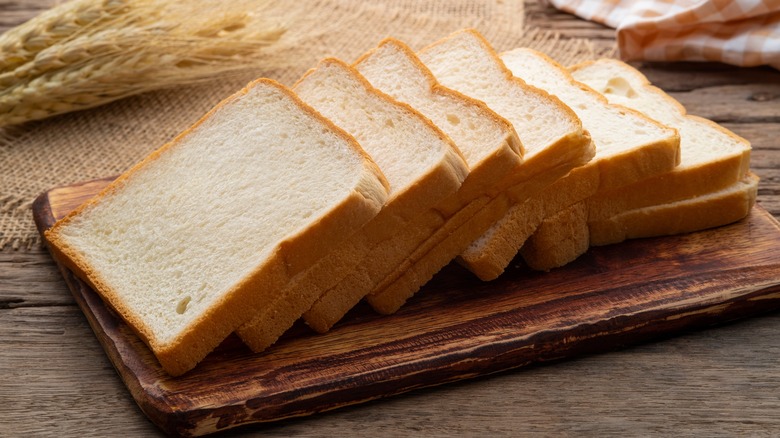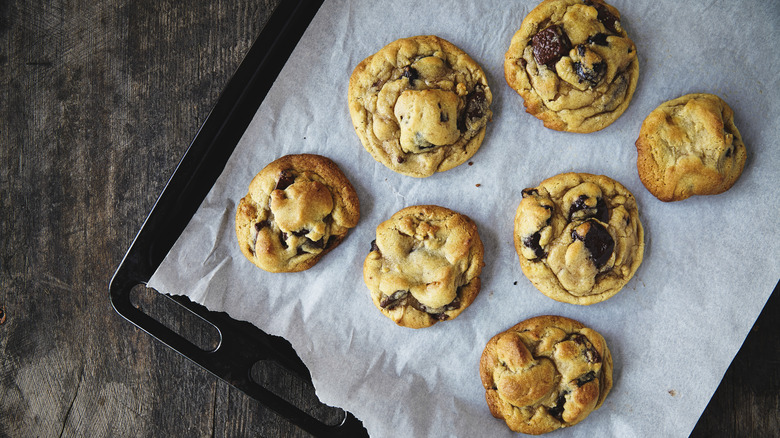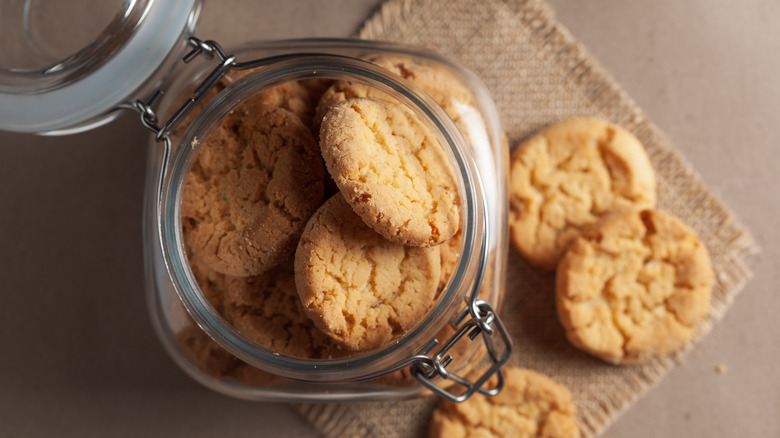How Your Least Favorite Slice Of Bread Can Keep Cookies Soft
The often unappreciated part of the bread, the heel or butt, is commonly passed up when making sandwiches. Savvy home cooks know how to repurpose the drier, thicker-cut end of a loaf into breadcrumbs, croutons, and bread pudding, but the least favorite slice of bread is also the secret to keeping homemade cookies soft for days.
Aside from dirty little hands, the enemy of freshly baked goods (including muffins, bread, and brownies) is exposure to air. Without the additives commercial bakers use to extend their shelf life, depending on the recipe, room-temperature homemade cookies become dry and stale after two to three days, as moisture evaporates from them.
While dunking them in a glass of milk or eating the entire batch immediately can solve the problem, there's a less caloric way to keep soft cookies from becoming hard and crumbly for days. For starters, bakers should limit the exposure of cookies to air by placing them in an airtight container. Then, slow down the process by adding the discarded heel, providing moisture to the container, and keeping chewy favorites like chocolate chip and molasses cookies soft for longer.
The heel creates a moist environment
The moisture in the bread creates a humid environment in the container, preventing the moisture in the cookies from evaporating as quickly. While any type of fresh bread will work, stick to white or wheat and avoid strongly flavored bread like rosemary or rye, which will affect the taste of the cookies. Just place one slice in the container and seal it.
Don't be tempted to add several slices of bread, as that will not further extend their freshness. Instead, the container will be too humid, and the cookies will get soggy and possibly moldy. Some people prefer to use flour tortillas since they are flat, and bakers can stack a tortilla between layers of cookies. This is especially helpful if you are mailing cookies and need them to stay fresh until they arrive.
If you are just reading this and wondering about the cookies already on your counter, it's not too late to extend their shelf life. Add the bread and allow the cookies to rest overnight in an airtight container to revive them.
This tip also works with brown sugar, which tends to dry out. Add the heel to its airtight container and prevent finding rock-hard brown sugar next time you bake.
The best way to store cookies long-term
How you store your cookies is a significant factor in their freshness, and unfortunately, while they're cute on the counter, keeping them in a cookie jar, metal tin, or under a cake dome makes the cookies stale quicker since those containers usually aren't airtight. Instead, only keep the cookies you will consume within a few days in a resealable zipper bag or airtight container and stash them inside a cookie jar or tin to keep them fresh and looking cute.
Cookies containing dairy, like Italian ricotta or cream cheese cookies, should be refrigerated in an airtight container once they cool. To keep baked cookies fresh longer, store them in the freezer for up to a year in resealable baggies.
For freshly baked cookies down the road, freeze tablespoon scoops of raw cookie dough on a parchment paper-lined cookie sheet, then transport them to freezer bags for up to six months. Slice-and-bake cookies can be formed into parchment paper-wrapped logs and stored in freezer baggies. Bake the frozen cookie dough directly from the freezer, adding a few minutes to the cooking time.



